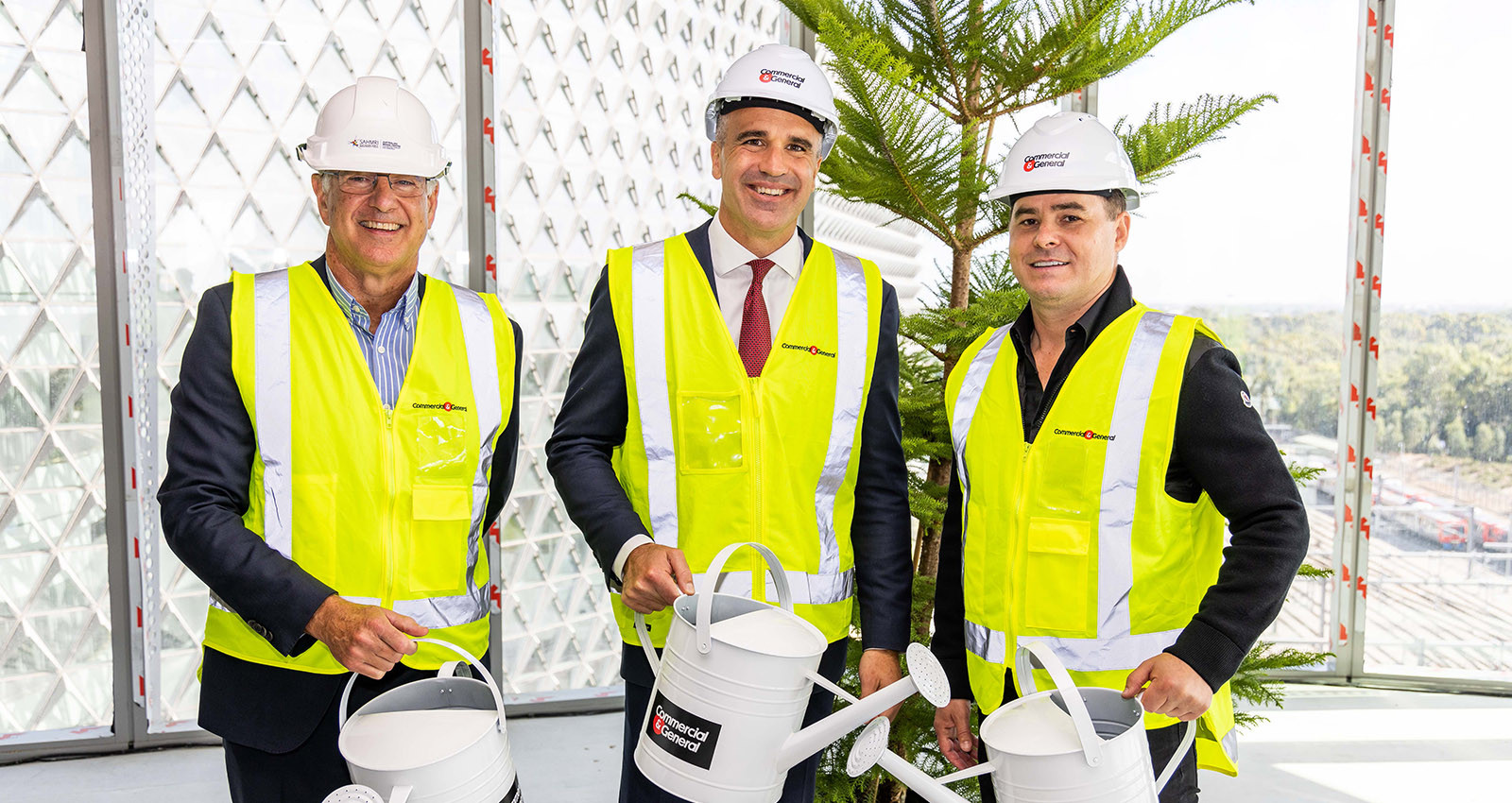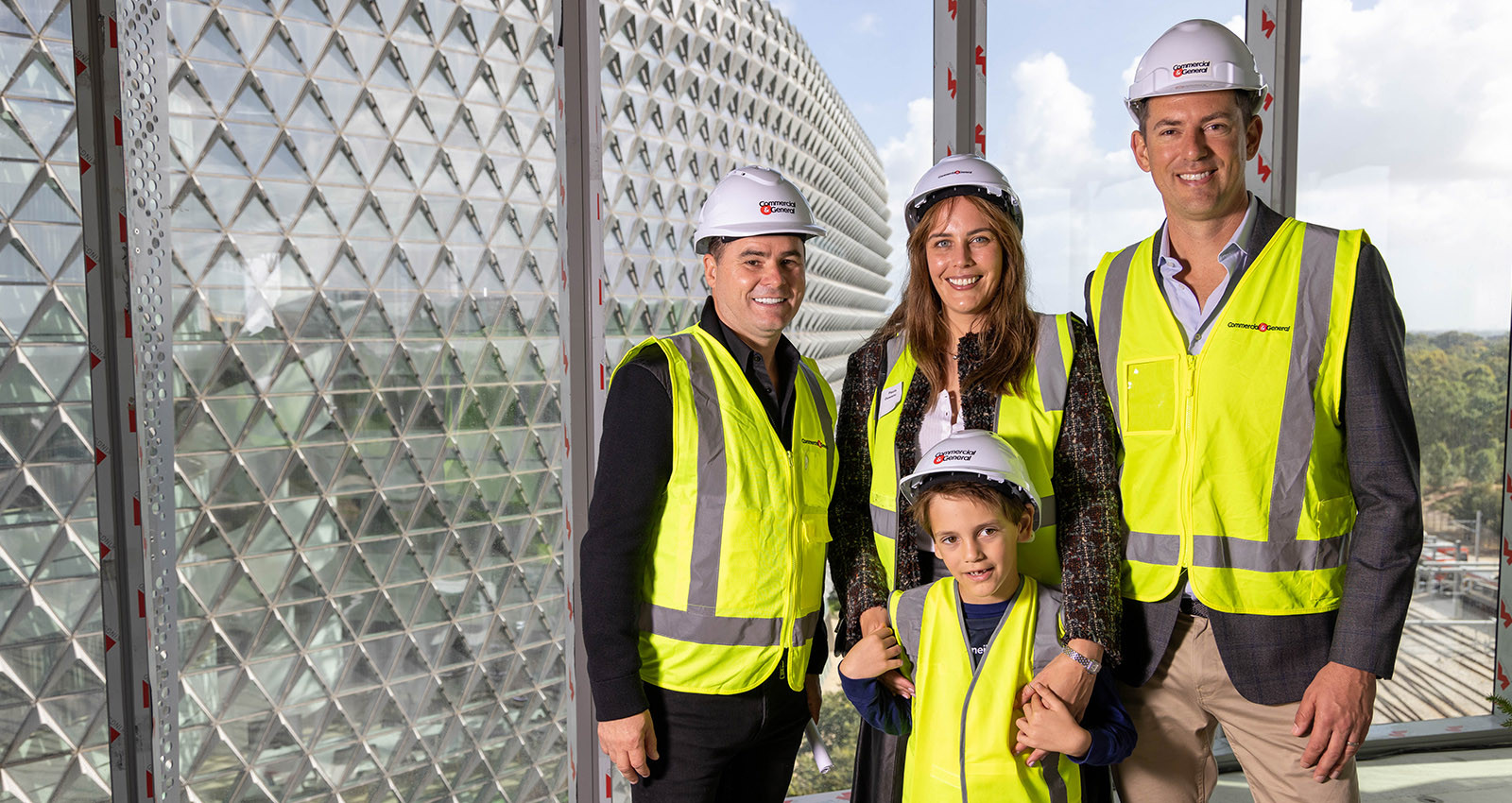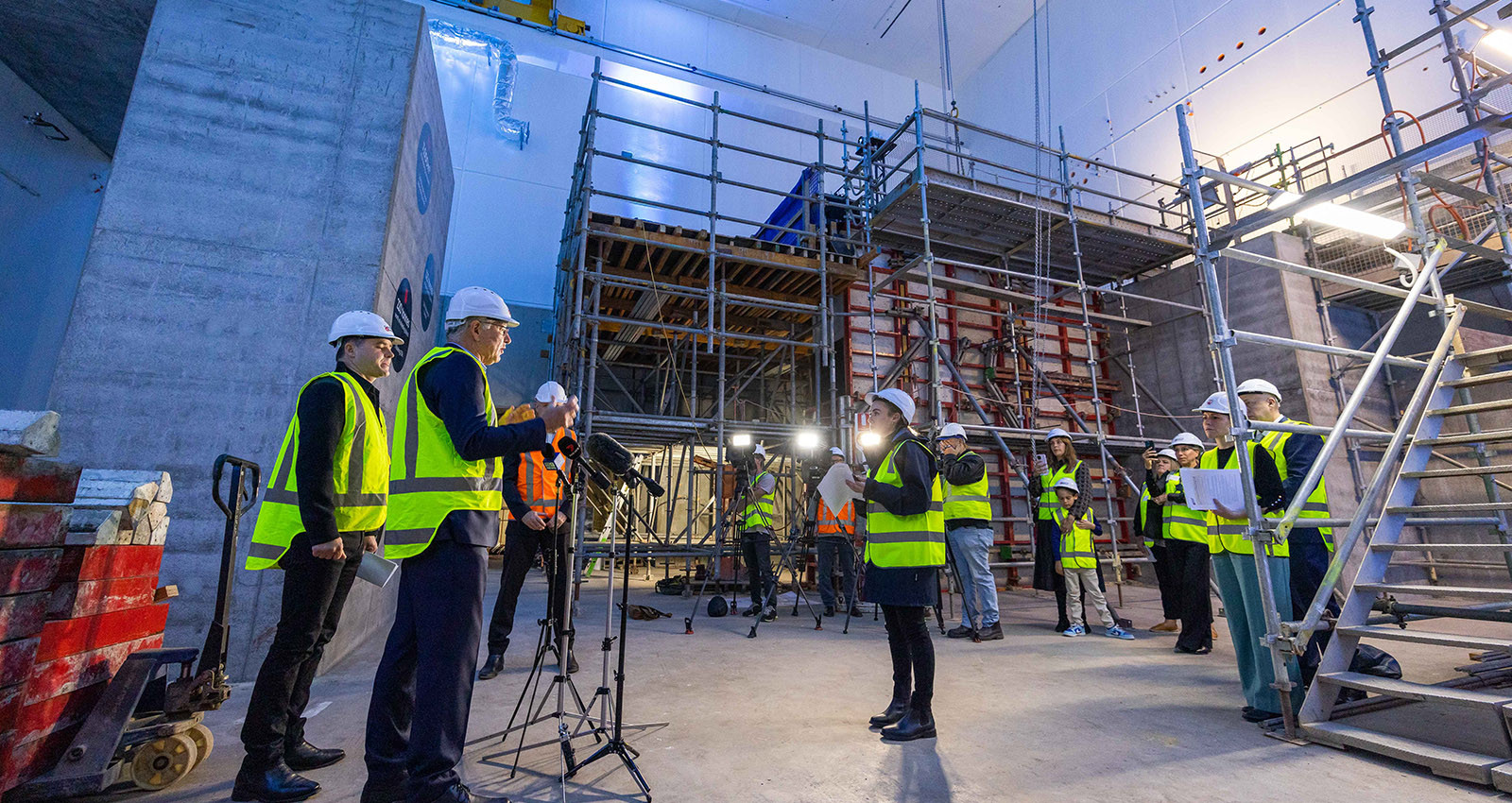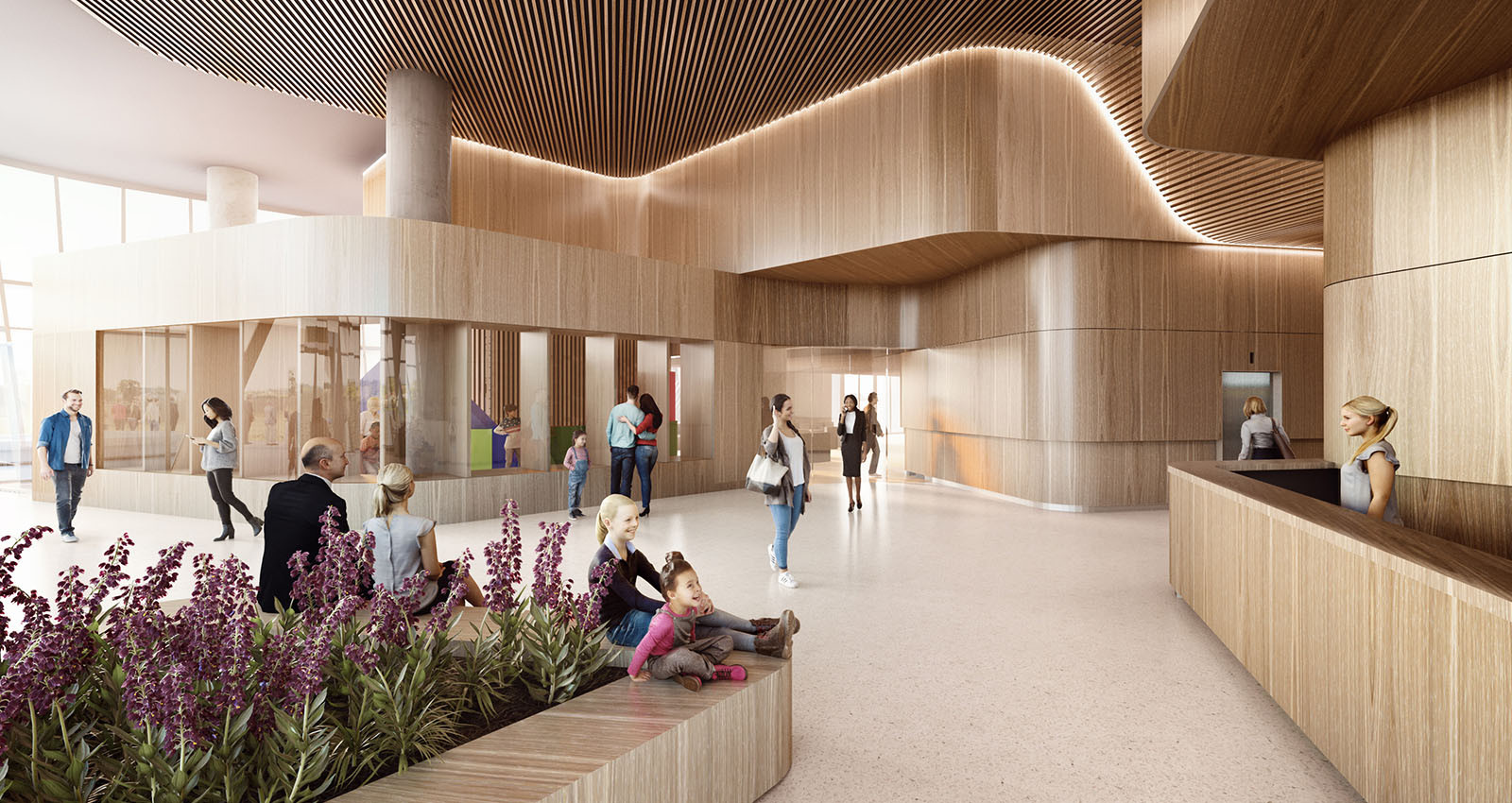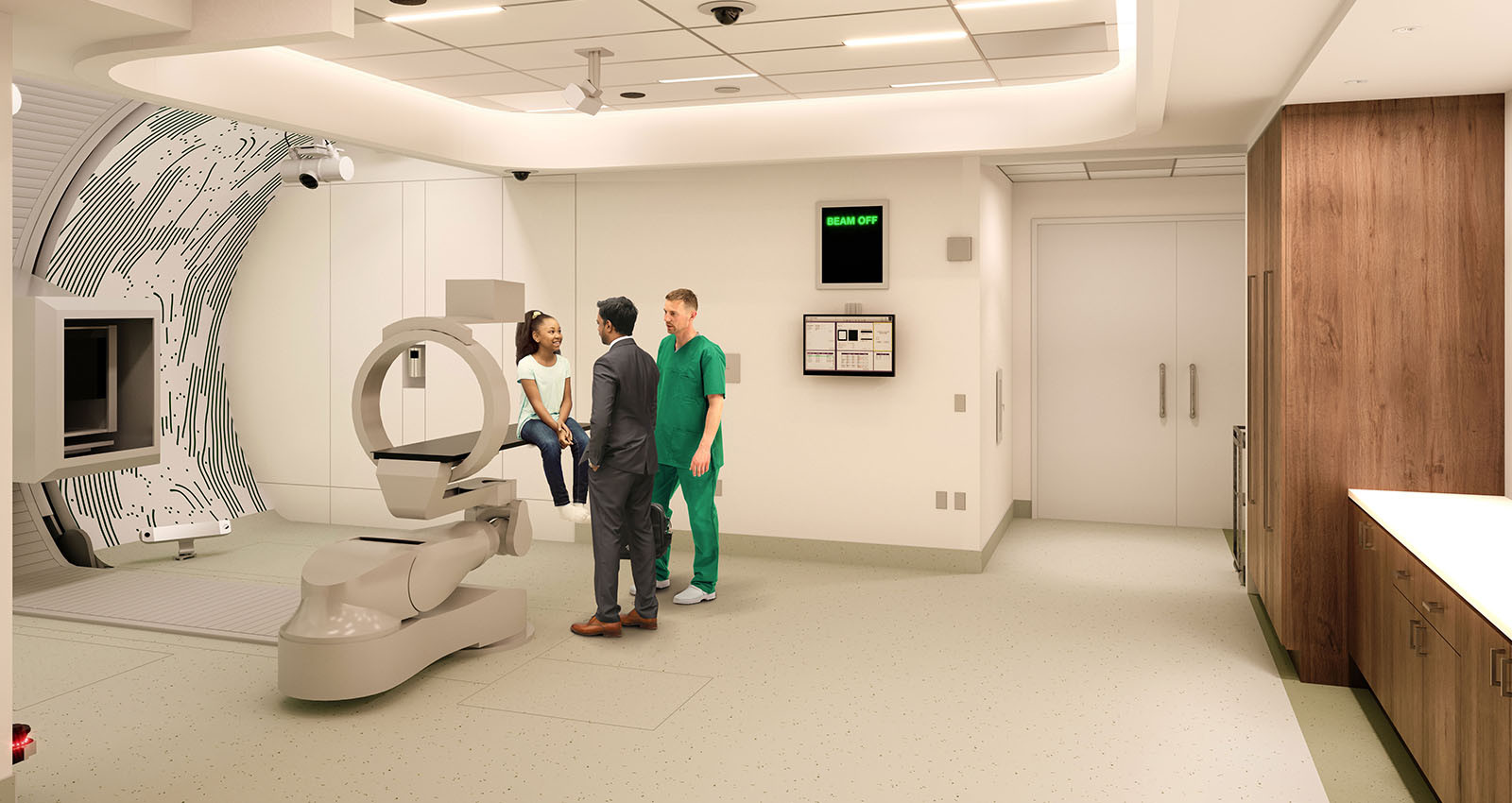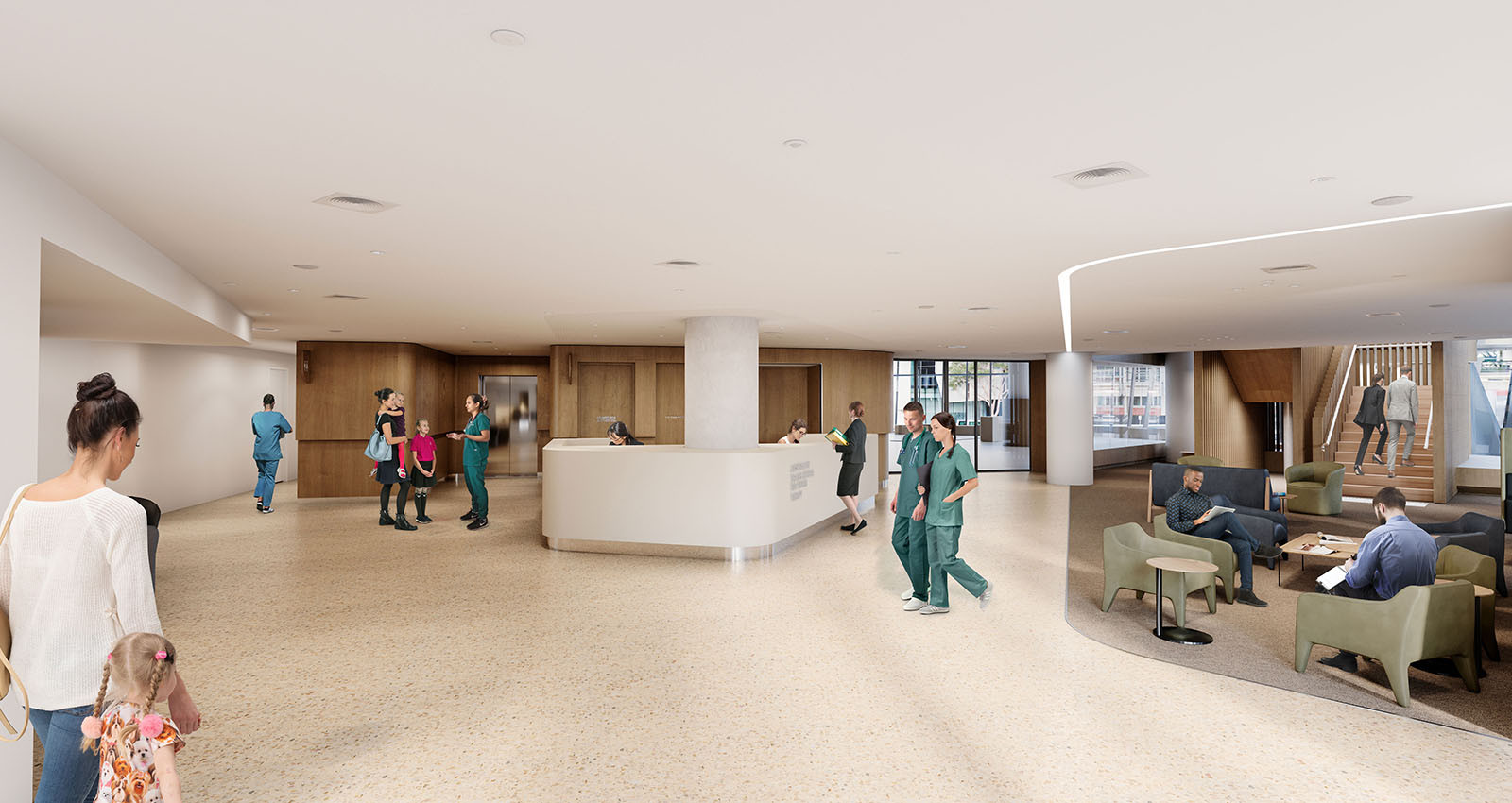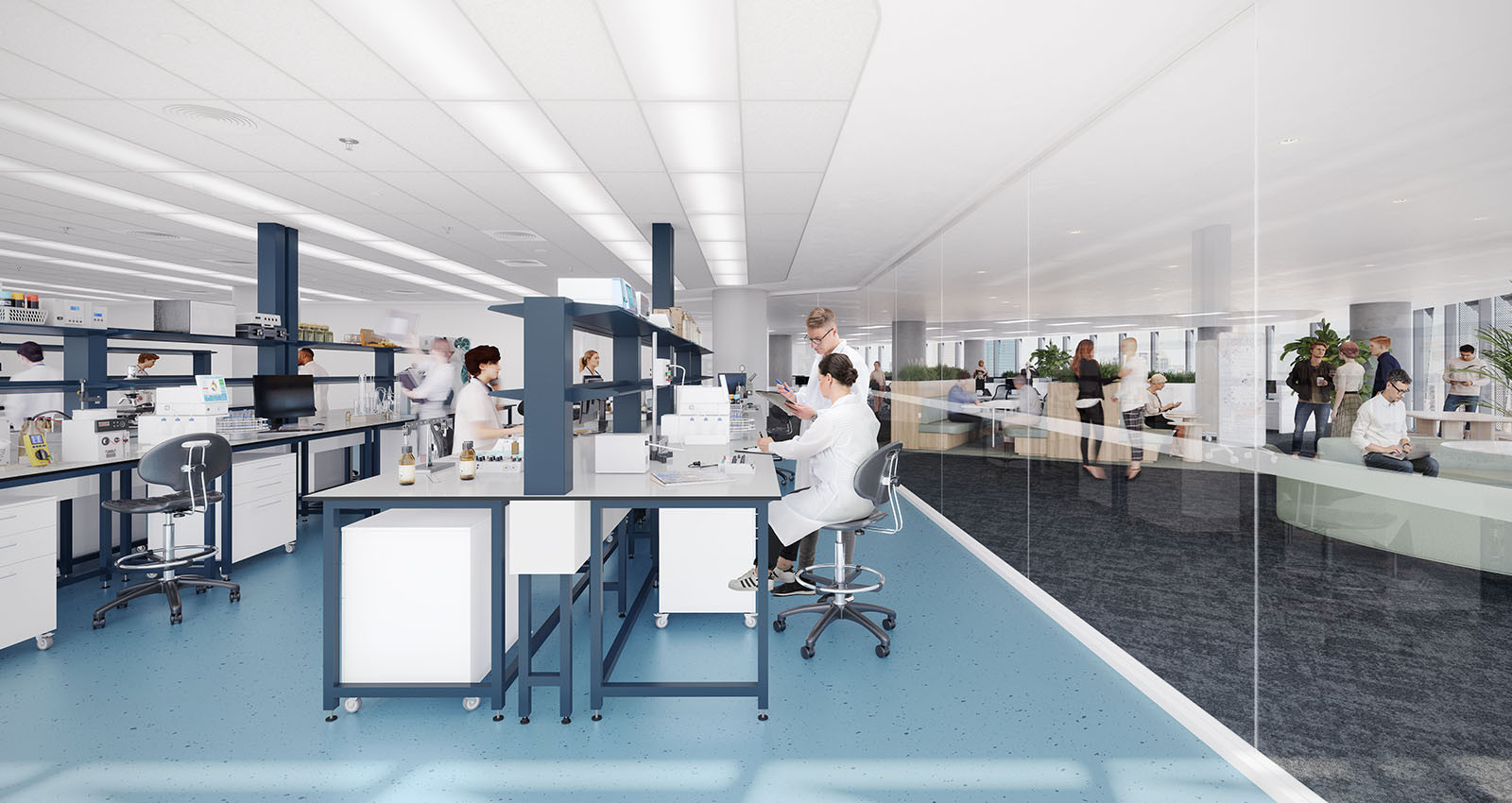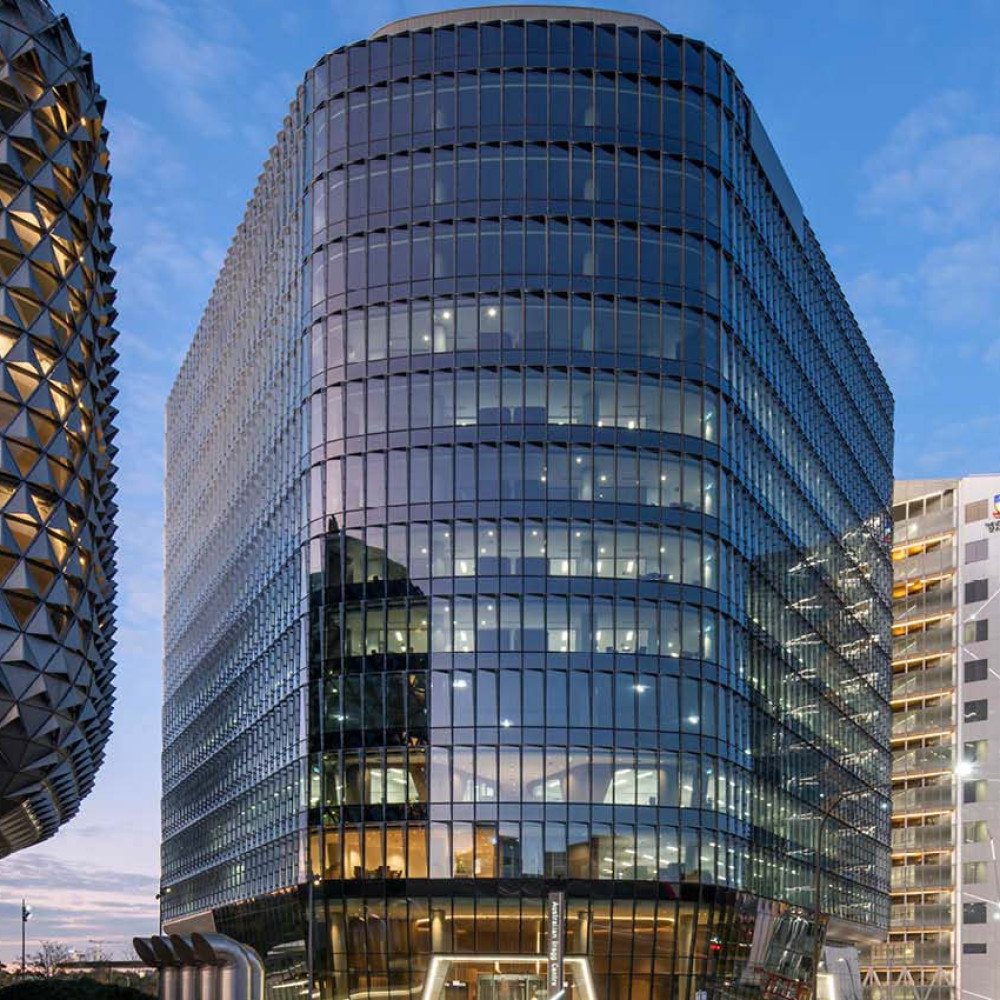11th April, 2023
Ground-breaking cancer treatment a step closer with topping out of $500 million Australian Bragg Centre
The building that will house Australia’s first Proton Therapy Unit has officially ‘topped out’, with construction of the $500 million Australian Bragg Centre reaching its full 74 metre height.
The purpose-built 15-storey biomedical development being built in Adelaide’s BioMed City precinct will also be home to leading cancer researchers is already 80% leased.
Construction of the building by Lendlease is on track to complete later this year ahead of the installation of the proton therapy unit. Following extensive testing and calibration, the unit is expected to treat its first patients around 18 months later.
When in full operation, it will have the ability to treat approximately 600-700 patients per year with around half of these expected to be children and young adults.
The Australian Bragg Centre for Proton Therapy and Research is being funded through a public/private partnership including SAHMRI, Commercial & General, Dexus, the Federal Government and the Government of South Australia.
Quotes attributable to Premier Peter Malinauskas:
“Adelaide’s BioMed City is a $4 billion precinct that represents the best in collaboration between our universities and health institutions, the private sector and state and federal governments.
“The establishment of the first proton therapy unit in Australia is important not only for the care it will deliver but also as a beacon for the best and brightest oncologists and researchers around the world.
“Today’s topping out is a great milestone for the state and for the hundreds of patients who will use it every year and I congratulate the project partners involved.”
The proton therapy unit bunker is three storeys high and sits 16 metres underground. Construction involved the removal of 66,000 tonnes of earth and the pouring of 7,000m3 of shielding concrete across 29 separate concrete pours with 281 precast panels, 121 tonnes of embedded steel shielding plates and three individual shielding doors weighing approximately 220 tonnes in total.
Commercial & General engaged with specialist consultants from Australia, Europe and the US to ensure construction of the bunker meets the specific tolerances required of proton therapy technology, including radiation shielding and vibration minimisation.
Quotes attributable to Commercial & General Executive Chair Jamie McClurg:
“In many ways, the engineering and construction of the proton therapy unit bunker is similar to the challenge of building nuclear submarines.
“Not only has it never been done before in Australia, but it’s also one of the very first installations in the Southern Hemisphere.
“That’s where the health expertise and global relationships we have built into our business have really come to the fore. We’ve incorporated international experience into a proudly South Australian build program that’s creating something tremendously exciting for the future of our state. This project once again demonstrates Commercial & General’s capability to successfully deliver critical health infrastructure for South Australia, on brief, on budget and on time.”
The highly targeted nature of proton beam therapy has the potential to reduce long-term damage to healthy tissues, making it a more suitable treatment option for complex tumours near important structures, such as the brain, spinal cord, or eyes.
This reduced risk to critical structures makes it a particularly advantageous treatment option for paediatrics, adolescent and young adult patients who are at greater risk of both long-term damage and side effects from the more conventionally used photon radiotherapy treatment.
Quotes attributable to SAHMRI Executive Director Professor Steve Wesselingh:
“First and foremost, the Australian Bragg Centre for Proton Therapy and Research will save the lives of Australians with cancer and mean they no longer need to relocate to the other side of the world for treatment during what is already a traumatic time in the lives of them and their families.
Just as importantly, this centre will be a leading site internationally for research into proton therapy, which is still a relatively new cancer-fighting technology. There is still so much medical science doesn’t know in terms of what cancers, and potentially other conditions, could be more safely and effectively treated with proton therapy.
At the moment, patients needing proton therapy treatment have to go overseas. This was the case for Adelaide 6-year old Van Ouwens who was diagnosed with stage four cancer of the foot in 2021 and faced the prospect of amputation. The cancer had also travelled to his lungs.
Instead, he underwent photon radiation at the Royal Adelaide Hospital and travelled with his father to the Mayo Clinic in the USA for proton therapy treatment on his lungs where the cancer had metastasised.
He has made a full recovery and will live out a dream tomorrow night (Thursday) when he participates in AFL Auskick during half-time of the Gather Round clash between Adelaide and Carlton.
Quotes attributable to Van’s father Alex Ouwens:
“We’d like to thank the State Government and our local clinical team for their amazing and caring treatment of Van over the last two years. Further we’d like to thank the Federal Government for providing funding for this local world class cancer treatment clinic so that other families will not need to incur the resources we did for our son.
“The proton therapy treatment that Van received at the Minnesota Mayo Clinic was, quite literally, lifesaving as it was able to target the cancer in his lungs in a way that other treatments simply couldn’t. It preserved his critical organs and structures such as his heart and thyroid.
“Our only option for Van’s best outcome was to travel to the USA at a cost that sat between $250,000-$500,000, added to our home mortgage, so it’s fantastic to think that future generations of Australians will be able to access this quality of treatment here in Adelaide without the enormous expense plus suffering the emotions around separating Van from his family for two months.”
The ability for Australians to access this revolutionary life-saving treatment at the Australian Bragg Centre was further improved last year by the Federal Government’s decision to add proton beam therapy to the Medicare Benefits Schedule.
MEDIA: Michels Warren PR - Phil Martin on 0418 817 876, Kristy Macfarlane on 0402 557 527
